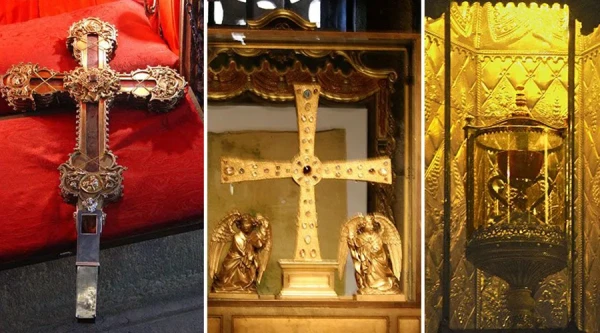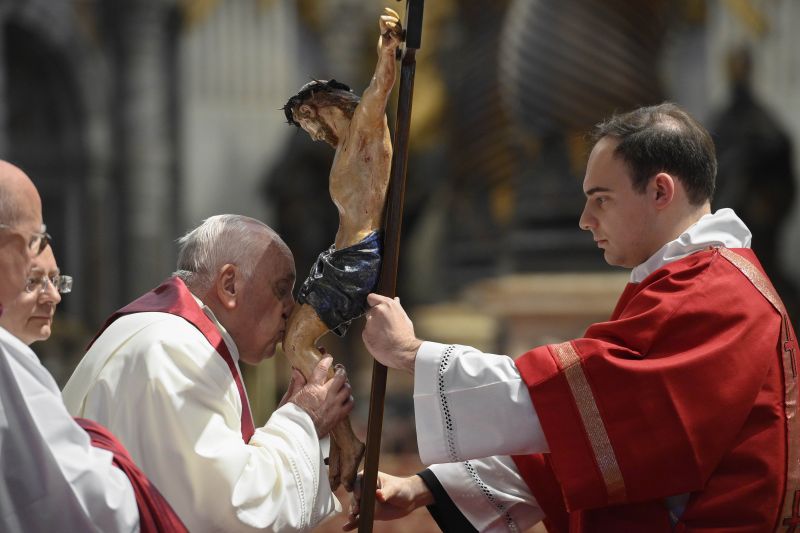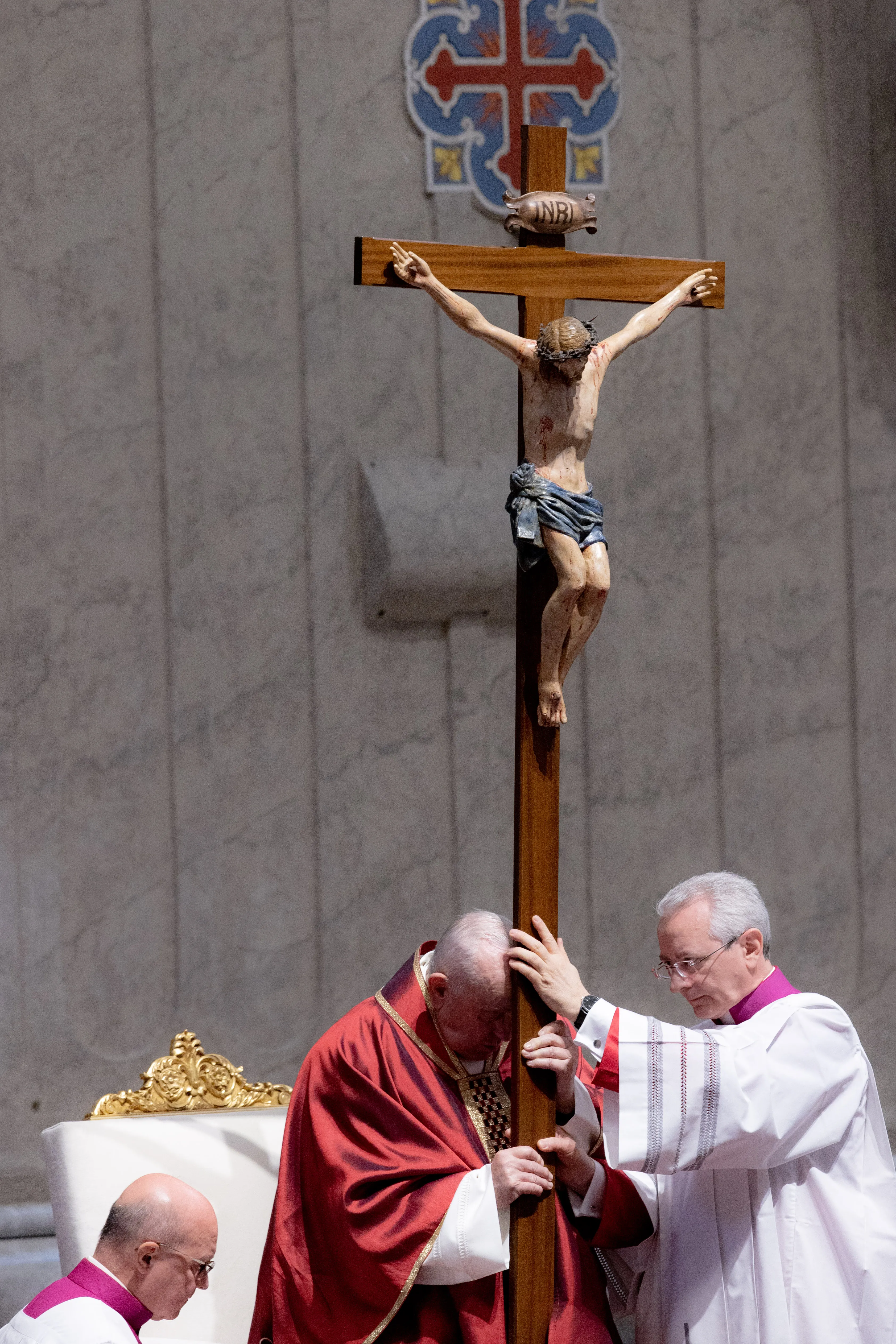
ACI Prensa Staff, Apr 1, 2021 / 04:13 am (CNA).- While the Shroud of Turin – believed to be the burial cloth that wrapped the body of Jesus after his death – may be the most recognizable relic association with Jesus’ Passion, several others exist.
Three of these relics are located in Spain, where they have been studied by scientists and venerated by pilgrims for many years.
Lignum Crucis: A Relic of the True Cross
For more than 1200 years, the Franciscan monastery of Santo Toribio de Liébana in Cantabria houses a relic believed to be a large part of the Cross of Christ.
This relic is known by its Latin name “Lignum Crucis” which means “Wood of the Cross,” and is believed to be the left horizontal arm of the Cross.
Saint Helena, the mother of the Emperor Constantine, went on a mission to Jerusalem, around 324 AD, to preserve the relics of the Lord’s Passion. One of them was the True Cross, which made its way in Spain in the 16th century.
In 1958, some tests were carried out to verify the relic’s authenticity.
“They confirmed that the wood is from a tree that exists in the Holy Land and is older than 2000 years,” Fr. Juan Manuel Núñez, superior of the convent of Santo Toribio de Liébana told ACI Prensa, CNA’s Spanish language news partner.
In addition, the DNA of the relic matches that of other smaller pieces of the cross that are preserved in different parts of the world.
The Holy Shroud of Oviedo
According to tradition, the shroud that covered the face of Jesus is kept in the Cathedral of Oviedo and is exposed to the public only three times a year: on Good Friday; on September 14, the Feast of the Holy Cross; and on September 21, the feast of Saint Matthew the Apostle, patron of the Spanish city.
Tradition holds that the Apostles venerated the relics of the Passion in Jerusalem, including this shroud, during the early years of Christianity. It was saved from the invading Persians in the 7th century and brought to Spain.
Jorge Manuel Rodríguez Almenar, president of the Spanish Center for Sindonology (the study of the shroud), has explained on numerous occasions that studies confirm that all the elements of the face of the Shroud of Oviedo fit those of the Shroud of Turin.
The last of these studies was carried out by the Catholic University of Murcia in Spain, which concluded that both fabrics enveloped the same person. The examination also indicated that the man of the Shroud of Turin and the man of the Shroud of Oviedo suffered the same wound to the side.
This detail agrees with John’s Gospel which records, “When they came to Jesus and saw that he was already dead, they did not break his legs, but one soldier thrust his lance into his side, and immediately blood and water flowed out.”
The Holy Chalice of the Last Supper
According to tradition, the chalice that Jesus used during the Last Supper is preserved in the Valencia cathedral.
According to Fr. Jaime Sancho, custodian of the Holy Chalice, the most complete study of this object was made in 1960 and the evidence suggested a very high degree of confidence in the relic’s authenticity.
The cup dates back to the time of Jesus and is made of a type of agate stone that was only found in the Holy Land.
“No subsequent archaeological study has disproved this research. It is the only chalice that has stood up under criticism and historical research,” said Sancho in a July 2016 interview with ACI Prensa.
“When one looks at this relic, one discovers the love of God in the Eucharist and that is what converts people,” the priest said.
St. John Paul II venerated the chalice in the Valencia cathedral and used it for the consecration during his visit to Spain in 1982.
Pope Benedict XVI used the chalice during the Mass for the Fifth World Meeting of Families held in Valencia in 2006.
The Chapel of the Holy Chalice can be visited virtually here.
https://www.visitvalencia.com/en/santogrial
If you value the news and views Catholic World Report provides, please consider donating to support our efforts. Your contribution will help us continue to make CWR available to all readers worldwide for free, without a subscription. Thank you for your generosity!
Click here for more information on donating to CWR. Click here to sign up for our newsletter.








Leave a Reply